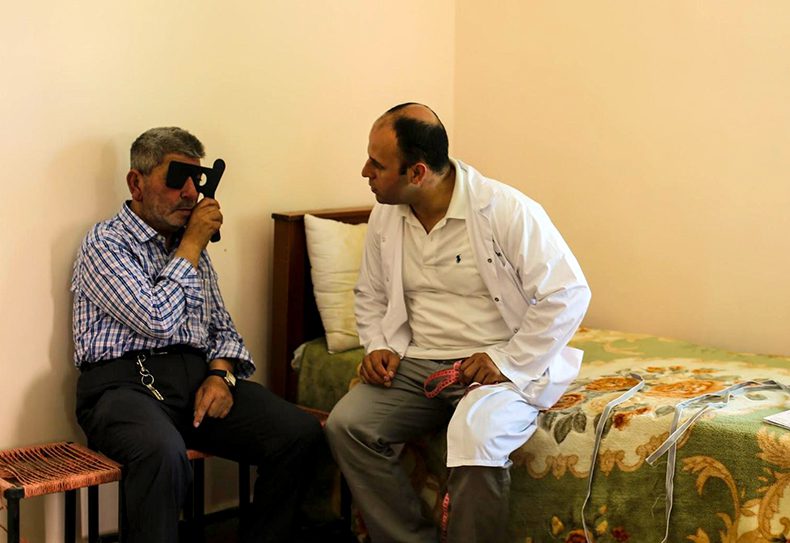
Major study into avoidable blindness in the occupied Palestinian territories is complete
- Article
- 18 September 2019
The Palestinian population has a rate of blindness which is ten times as high as in the West, but insufficient research has been conducted. This means those attempting to combat preventable blindness in the region have little understanding of where to focus their efforts.
A Rapid Assessment of Avoidable Blindness (RAAB), is a population-based survey of adults aged 50 years and over, using rapid examination techniques. In 2018 we launched the oPt’s second-ever RAAB in partnership with the London School of Hygiene and Tropical Medicine (LSHTM), which concluded in May 2019.
This report had a number of helpful findings, especially compared with a similar 2008 study conducted by St John of Jerusalem Eye Hospital Group (SJEHG). In the 2018 study we screened 3,848 patients aged 50 years and above in their own home. It was found that untreated cataracts (38%) and diabetic retinopathy (24%) were the main causes of avoidable blindness in the oPt in 2018. However, in 2008 cataract caused 55% of avoidable blindness- suggesting that cataract as a cause of blindness dropped because the number of unoperated cataract cases had decreased. In 2008, Diabetic retinopathy caused 8% of blindness. Diabetic retinopathy as a cause of blindness increased most probably because the prevalence of diabetes has increased and the diabetes and DR services were not improved to fall in line with these increased rates. This demonstrates that it is a growing issue for ophthalmic health in the oPt. These findings will enable us to develop effective, data-led strategies for tackling avoidable blindness.
Dr Nahed Mikki, who has project managed the most recent RAAB, explains the importance of these results: